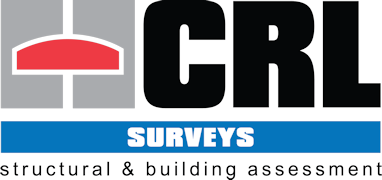With over 20 years experience undertaking inspections of bridges, including 'Special Inspections' of post-tensioned structures CRL Surveys were well placed to assist customers with other, broadly related pre-stressed and post-tensioned structures. Consequently, following the partial collapse of a pre-stressed, wire-wound 'Preload' tank in 1999 and a subsequent total collapse of a post-tensioned tank in 2006 we have undertaken over 30 No. 'Special Inspections' of various Tank designs, from various manufactures, to both assess their structural form, long after 'as-built' details had been lost, together with assessing material and structural condition.
The 'Preload' and related systems originated in the USA during the 1940's, with thousands of structures built under licence around the world and including the UK. Structures included ground bearing tanks, some with and some without domed roofs, water towers and bund walls. In the UK, designs differ from site to site, with structures in many cases approaching 50 years old. Many UK structures were reported to have suffered corrosion of the wire-windings, critical to structural stability, early in their lives, with some re-wound and others remedially post-tensioned, some on several occasions. Consequently, potential problems and vulnerabilities can be encountered dating back to design and construction, or any of the subsequent remedial works phases, with potentially significant distress, corrosion of wires and tendons, hidden under layers of 'repair' and paint.
The post-tensioned tanks investigated were of later construction, many less than 10 years old, comprising thin pre-cast wall panels threaded with post-tensioned cables, which were anchored within thicker wall panels or anchor-blocks. Tanks have been encountered with construction faults, where poorly aligned panels have caused problems threading tendons, causing stripping of their protective sheaths. In many cases water (in some cases seawater) has been found within the tendon ducts, with others containing effluent from inside the tanks. Corrosion of the anchors is commonly found, particularly when the outer ends have not periodically been re-greased.
Working directly for Water Authorities, or with their Supply Chain Partners, we have developed bespoke methodologies, based upon our experience undertaking Special Inspections of post-tensioned bridges, to ensure these potentially sensitive and vulnerable structures are approached in a cautious, methodical and safe manner, to optimise the data gathered and minimise damage, which could represent further vulnerabilities.
Based upon Highways Agency, Design Manual For Roads and Bridges guidance, specifically for the 'Special Inspection' of post-tensioned bridges, our approach is staged, commencing with a preliminary inspection, to assess general form and overall condition, followed by a 'desk study' of previous inspection reports and any available design and 'as-built' information. In many cases historical, site-specific information is scarce.
If deemed safe to continue, bespoke, site-specific Method Statements and Risk Assessments are then prepared for a full and thorough, close-quarters, tactile visual inspection, with hammer testing and in some cases preliminary, non-destructive scanning to provide preliminary information concerning some pre-stressing or post-tensioning details. The results of this inspection are used to enable the focus of the next stage, i.e. a targeted intrusive investigation of a representative number of the structures vulnerable locations.
Again, bespoke Method Statements and Risk Assessments are prepared, where required including the installation of temporary protection works. This stage of our investigations involves pin-pointing target details, by remote scanning to identify hidden components and then very careful and controlled 'keyhole' breaking out to expose and assess the target details.



